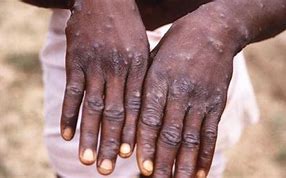The patient remained in self-isolation for further 10 days and sought medical care for relief of symptoms. The patient was admitted to a referral hospital on May 23. Skin lesion samples were received at the Public Health England Rare and Imported Pathogens Laboratory on May 24. The West African clade of Monkeypox virus was confirmed by polymerase chain reaction (PCR) on May 25.
“On May 29, a family member with whom the patient quarantined developed lesions clinically compatible with Monkeypox and was immediately isolated in an appropriate facility. Monkeypox was confirmed on May 31. Both patients are stable and recovering.”
WHO continued: “The health authorities of the United Kingdom activated an incident management team and implemented public health measures, including isolation of the index case and secondary case and tracing of all close contacts in the hospital and community.
“Follow-up is being undertaken for the contacts of the two cases for 21 days after their last exposure. No close contacts have travelled outside the United Kingdom following exposure. Post-exposure vaccination was not offered to contacts.
“Information was shared with the Nigerian National IHR Focal Point, which has initiated an outbreak investigation and is gathering further information regarding potential source of infection and exposure in Nigeria.”
According to the apex United Nations health agency, Monkeypox is a sylvatic zoonosis with incidental human infections that usually occur sporadically in forested parts of Central and West Africa. It is caused by a virus that belongs to the Orthopoxvirus family.
It can be transmitted by contact and droplet exposure via exhaled large droplets. Its incubation period is usually from six to 13 days, but can also range from five to 21 days.
The disease is often self-limiting with symptoms usually resolving spontaneously within 14 to 21 days. Symptoms could be mild or severe, even as lesions could be very itchy or painful. Milder cases may go unreported and represent a risk of person-to-person transmission. The animal reservoir remains unknown, although is likely to be among rodents. Contact with live and dead animals through hunting and consumption of wild game or bush meat are known risk factors.
source: Medicalworldnigeria

 The World Health Organisation (WHO), yesterday, confirmed that the recent Monkeypox outbreak in United Kingdom and Northern Ireland originated from Delta State. The global agency, in a statement, said: “On May 25, 2021, the United Kingdom of Great Britain and Northern Ireland notified WHO of one laboratory-confirmed case of Monkeypox.
The World Health Organisation (WHO), yesterday, confirmed that the recent Monkeypox outbreak in United Kingdom and Northern Ireland originated from Delta State. The global agency, in a statement, said: “On May 25, 2021, the United Kingdom of Great Britain and Northern Ireland notified WHO of one laboratory-confirmed case of Monkeypox.




